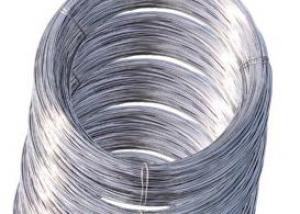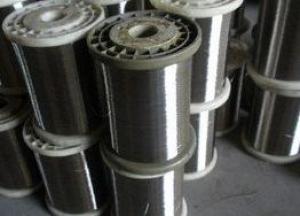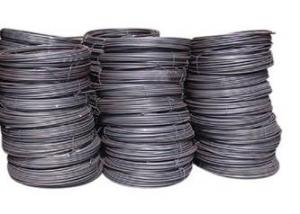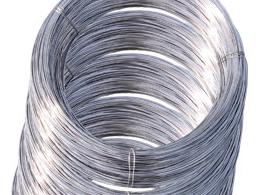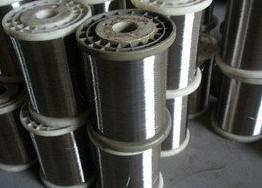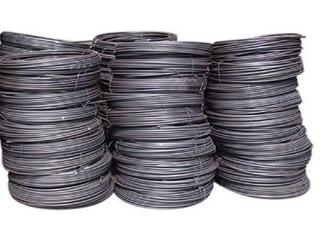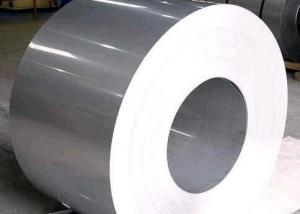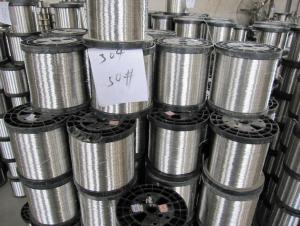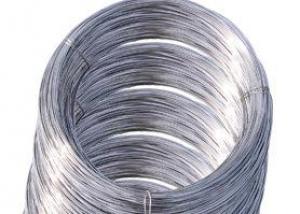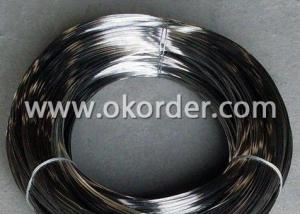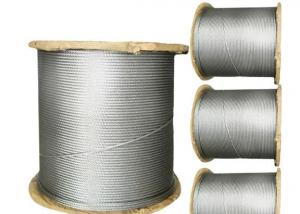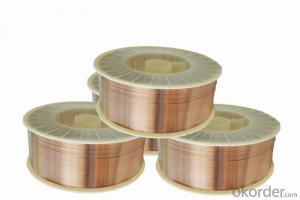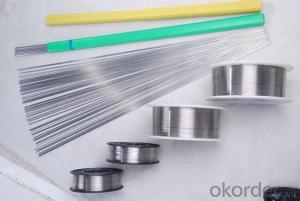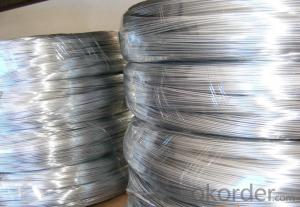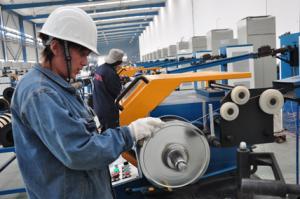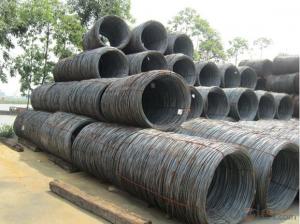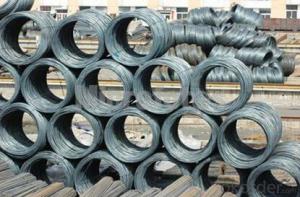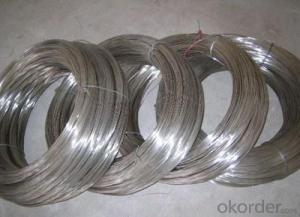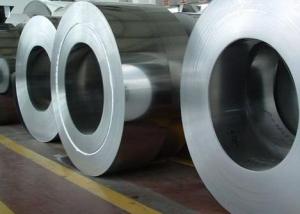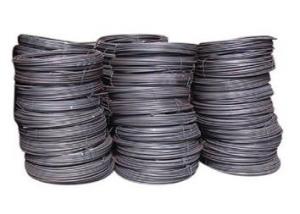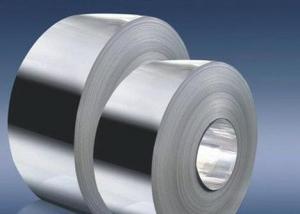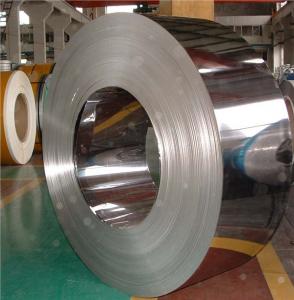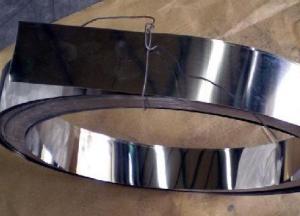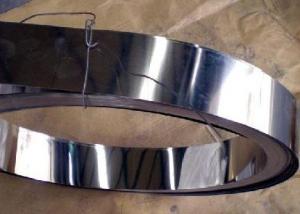Steel Wire Rod
- Loading Port:
- China Main Port
- Payment Terms:
- TT or LC
- Min Order Qty:
- 1 Ton m.t.
- Supply Capability:
- 2000 Tons Per Month m.t./month
OKorder Service Pledge
OKorder Financial Service
You Might Also Like
Stainless Steel Wire
1.Grade: SS 200,300,400 series
2.Dia: 0.1mm-100mm
3.Length:500m-2000m/Reel
4.Surface: Bright
5.Certificate: Fortune 500, SGS, ISO 9001:2008
6.Test: Salt Spray over200 hours
7.MOQ:500kg
8.Delivery: Within 20 days
9.Packing: Reel, wooden box or according to your requirement
10.Payment terms: China Main Port or CIF ANY PORT
11. Application: Tie wire, pins, lashing, forming wire, filters, gaskets, elevators, safety wire, shaped and flat wire, conveyors, jewelry, springs, brush welding, electrical, wire line, craft and many more applications.
|
Main Grades |
C % |
Si % |
S % |
P % |
Mn % |
Cr % |
Ni % |
Mo % |
Cu % |
|
S30400 |
<0.08 |
<0.75 |
<0.015 |
<0.045 |
<2 |
18.05-19 |
8.01--8.25 |
<0.6 | |
|
304H |
0.04-0.1 |
<0.75 |
<0.015 |
<0.045 |
<2 |
18.05-19 |
8.01--8.25 |
<0.5 | |
|
304Hc1 |
0.03-0.05 |
<0.75 |
<0.015 |
<0.045 |
<2 |
18.05-19 |
8.01-8.25 |
1.2-1.6 | |
|
304Hc |
0.03-0.05 |
<0.75 |
<0.015 |
<0.045 |
<2 |
18.05-19 |
8.01--8.25 |
2-3 | |
|
304Hc3 |
0.03-0.05 |
<0.75 |
<0.015 |
<0.045 |
<2 |
18.05-19 |
8.01--8.25 |
3-3.5 | |
|
304ES |
<0.08 |
<0.75 |
<0.015 |
<0.045 |
2-3 |
16.05-17 |
6.01-6.3 |
1.5-3 | |
|
304M2 |
0.05-0.08 |
<0.75 |
<0.015 |
<0.045 |
2-3 |
18-18.5 |
7-8.1 |
<0.6 | |
|
304M3 |
0.05-0.08 |
<0.75 |
<0.015 |
<0.045 |
2-3 |
18-18.5 |
8.01-8.25 |
<0.6 | |
|
304L |
<0.035 |
<0.75 |
<0.015 |
<0.045 |
<2 |
18.05-19 |
8.01--8.25 |
<0.6 | |
|
321 |
0.04-0.08 |
<0.75 |
<0.015 |
<0.045 |
<2 |
17-18 |
8.01--8.25 |
||
|
316L |
<0.035 |
<0.75 |
<0.015 |
<0.045 |
<2 |
16.05-17 |
10.01--10.35 |
2.01-2.2 |
<1 |
|
316 |
0.04-0.08 |
<0.75 |
<0.015 |
<0.045 |
<2 |
16.05-17 |
10.01--10.35 |
2.01-2.2 |
<1 |
|
316LCu |
<0.035 |
<0.75 |
<0.05 |
<0.045 |
<2 |
16-17 |
10-10.5 |
2-2.25 |
|
|
ER316L |
<0.04 |
0.65 |
<0.03 |
<0.04 |
1.0-2.5 |
18-20 |
11.1-12 |
||
|
201CU |
<0.08 |
<0.75 |
<0.015 |
<0.045 |
8-9.5 |
13.05-14 |
4.01-4.25 |
2-3 | |
|
D667 |
<0.08 |
<0.75 |
<0.015 |
<0.045 |
13-14 |
13-14 |
0.7-1.5 |
1.5-3 | |
|
D665B |
<0.08 |
<0.75 |
<0.015 |
<0.045 |
14-16 |
10.05-11 |
<1.2 |
0.5--1.5 | |
|
202B |
0.1-0.15 |
<0.75 |
<0.015 |
<0.045 |
9-10 |
17.05-18 |
4.5-5 |
||
|
D669 |
0.08-1.0 |
<0.75 |
<0.015 |
<0.045 |
14.5-16 |
11-12 |
<1.2 |
0.5-1.5 | |
|
200CU |
<0.08 |
<0.75 |
<0.015 |
<0.045 |
11-12 |
13-14 |
1-2 |
1.5-2.5 |
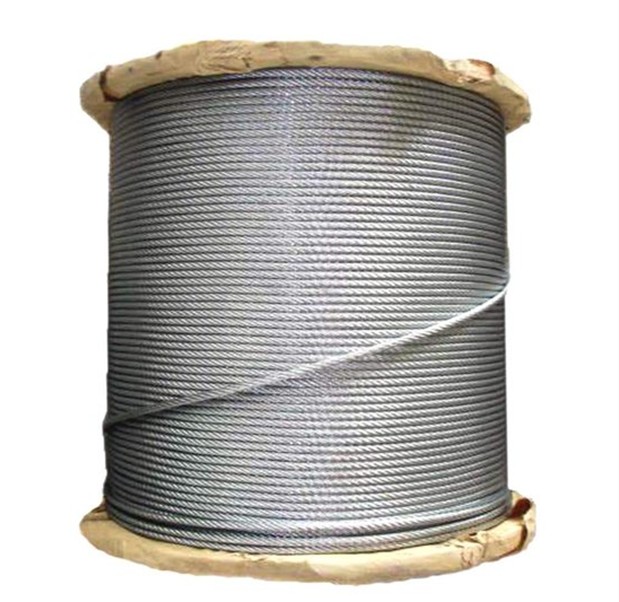
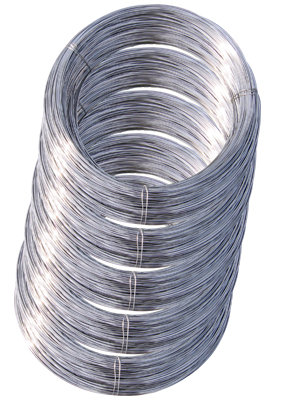
- Q: What are the different types of stainless steel wire springs used in the jewelry industry?
- In the jewelry industry, stainless steel wire springs are commonly used due to their durability, strength, and resistance to corrosion. These springs are available in various types, each serving a specific purpose. 1. Torsion Springs: Torsion springs are widely used in jewelry applications. They store mechanical energy when twisted and provide rotational or torsional force. These springs are commonly found in clasps, hooks, and closures, ensuring a secure and reliable connection. 2. Compression Springs: Compression springs are designed to resist compressive forces and return to their original shape when the force is removed. They are used in jewelry to provide tension or pressure, such as in adjustable bracelets or rings. These springs allow for flexibility and adjustability, accommodating different wrist or finger sizes. 3. Extension Springs: Extension springs, also known as tension springs, are used to absorb and store energy when stretched. In the jewelry industry, they are often used in chain link connectors or necklace extenders, allowing for length adjustment. These springs provide the necessary tension to keep the jewelry securely in place. 4. Wire Forms: Wire forms are versatile stainless steel wire springs that can be customized into various shapes and sizes. They are commonly used in jewelry for decorative purposes, such as forming unique pendant or earring designs. Wire forms allow for creativity and flexibility in jewelry design. It's important to note that stainless steel wire springs used in the jewelry industry are typically made from high-quality stainless steel alloys. These alloys provide excellent corrosion resistance, ensuring that the springs will maintain their integrity and appearance over time, even with exposure to moisture or chemicals.
- Q: Can stainless steel wire be used for making jewelry clasps?
- Yes, stainless steel wire can be used for making jewelry clasps. It is a durable and corrosion-resistant material that provides strength and longevity to clasps, ensuring the jewelry stays secure.
- Q: What is the difference between stainless steel plate, matte surface and wire drawing surface?
- Stainless steel plate, drawing surface is one of the frosted surface, matte surface basically has SB, HL (wire drawing), NO.4 (snow) these three surfaces.
- Q: Can stainless steel wire be used for medical devices?
- Yes, stainless steel wire can be used for medical devices. Stainless steel is a common material used in the medical field due to its various beneficial properties. It is corrosion-resistant, durable, and can withstand high temperatures, making it ideal for medical devices that require sterilization. Stainless steel wire is often utilized in surgical instruments, orthopedic implants, catheters, and other devices that require strength and reliability. Additionally, stainless steel is biocompatible, meaning it does not react with the body's tissues or cause any adverse reactions, making it a safe choice for medical applications.
- Q: What are the different types of stainless steel wire brushes?
- There are several different types of stainless steel wire brushes available, each designed for specific applications and purposes. Some of the most common types include: 1. Crimped wire brushes: These brushes have a crimped wire pattern, which helps to increase the flexibility and surface coverage. They are commonly used for light to medium-duty cleaning and deburring tasks. 2. Knotted wire brushes: These brushes have wire knots that are twisted together, providing a more aggressive brushing action. They are ideal for heavy-duty tasks such as removing rust, weld scale, and corrosion from metal surfaces. 3. Cup brushes: Cup brushes have a cylindrical shape with bristles arranged in a cup-like configuration. They are typically used for cleaning large flat surfaces, such as removing paint or rust from metal parts. 4. Wheel brushes: Wheel brushes are similar to cup brushes but have a wheel-shaped design. They are often used for cleaning and finishing applications on curved or irregular surfaces. 5. End brushes: End brushes have bristles arranged in a circular pattern at the end of the brush. They are commonly used for reaching tight or hard-to-reach areas, such as cleaning threads, grooves, or crevices. 6. Miniature brushes: These brushes are small in size and are often used for precision cleaning or detailing work. They are commonly used in industries like jewelry making, electronics, or dental applications. 7. Strip brushes: Strip brushes consist of a strip of stainless steel wire bristles held together by a metal or plastic backing. They are frequently used for industrial applications, such as sealing gaps, dust or debris removal, or conveyor belt cleaning. Each type of stainless steel wire brush has its own unique characteristics and applications, so it's important to choose the right brush for the specific task at hand.
- Q: Can stainless steel wire be used for fishing lines?
- Yes, stainless steel wire can be used for fishing lines. Stainless steel wire is strong, durable, and has high resistance to corrosion, making it suitable for fishing in both freshwater and saltwater environments. However, it is important to note that stainless steel wire may not have the same flexibility and sensitivity as traditional fishing lines, which could affect the fishing experience.
- Q: How does stainless steel wire resist staining?
- Stainless steel wire resists staining due to its high chromium content, which forms a protective layer of chromium oxide on the surface. This layer acts as a barrier, preventing the wire from reacting with oxygen or other corrosive substances, thereby maintaining its corrosion resistance and preventing staining.
- Q: What are the different types of stainless steel wire screens?
- There exists a variety of stainless steel wire screens to cater to specific applications and objectives. Some commonly used types include: 1. Plain weave screens: These screens are woven by crossing wires over and under in a simple crisscross pattern. They are typically employed in general-purpose screening applications due to their strength and durability. 2. Twill weave screens: Similar to plain weave screens, twill weave screens have wires woven in a diagonal pattern, resulting in a tighter and more stable weave. They are often utilized in finer filtration and sieving applications. 3. Dutch weave screens: Dutch weave screens have a complex weave pattern with tightly woven wires in the warp direction and larger gaps in the weft direction. This structure provides excellent filtration performance, making them suitable for precision filtration and separation processes. 4. Welded wire screens: These screens are created by welding individual wires together at their intersections. They are renowned for their high strength and rigidity, making them ideal for heavy-duty applications such as security fencing or machine guards. 5. Expanded metal screens: Expanded metal screens are formed by cutting and stretching a metal sheet, resulting in diamond-shaped openings. They offer good airflow, visibility, and protection, commonly used in architectural and decorative applications. 6. Perforated metal screens: Perforated metal screens are produced by punching holes into a metal sheet, creating regularly spaced openings. They offer versatile functionality, allowing precise control over the size and distribution of the openings. They find application in acoustic panels, ventilation systems, sorting, or grading processes. When selecting the appropriate stainless steel wire screen, it is crucial to consider specific requirements like desired mesh size, strength, corrosion resistance, and compatibility with the surrounding environment.
- Q: How long does stainless steel wire last?
- Stainless steel wire has exceptional durability and can last for many years, often decades, depending on various factors such as its quality, usage conditions, and maintenance.
- Q: Is stainless steel wire suitable for weaving baskets?
- Yes, stainless steel wire is suitable for weaving baskets. It is strong, durable, and resistant to rust and corrosion, making it an excellent choice for creating long-lasting and sturdy baskets. Additionally, its malleability allows for intricate designs and tight weaves, making it a versatile material for basket weaving.
Send your message to us
Steel Wire Rod
- Loading Port:
- China Main Port
- Payment Terms:
- TT or LC
- Min Order Qty:
- 1 Ton m.t.
- Supply Capability:
- 2000 Tons Per Month m.t./month
OKorder Service Pledge
OKorder Financial Service
Similar products
Hot products
Hot Searches
Related keywords
